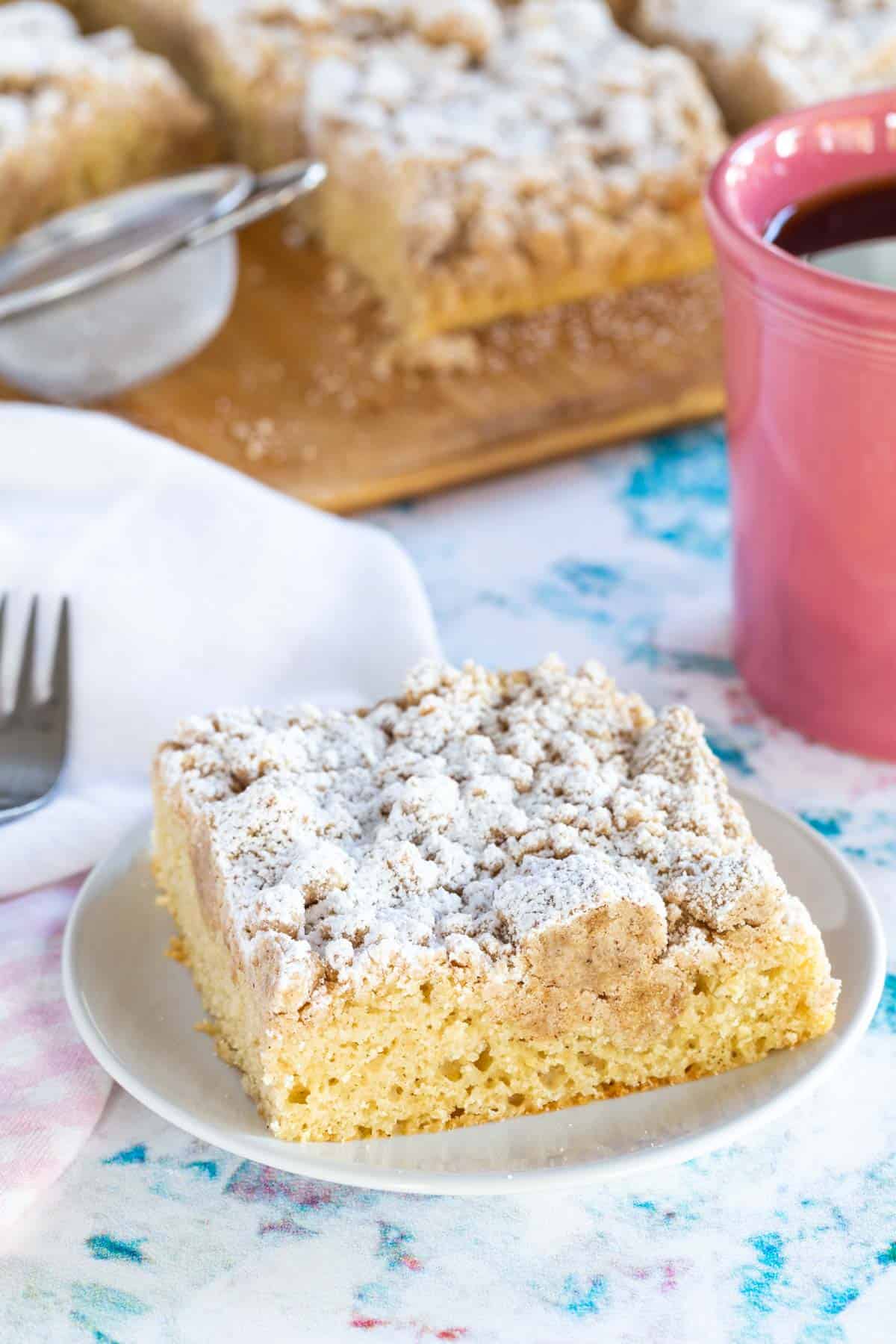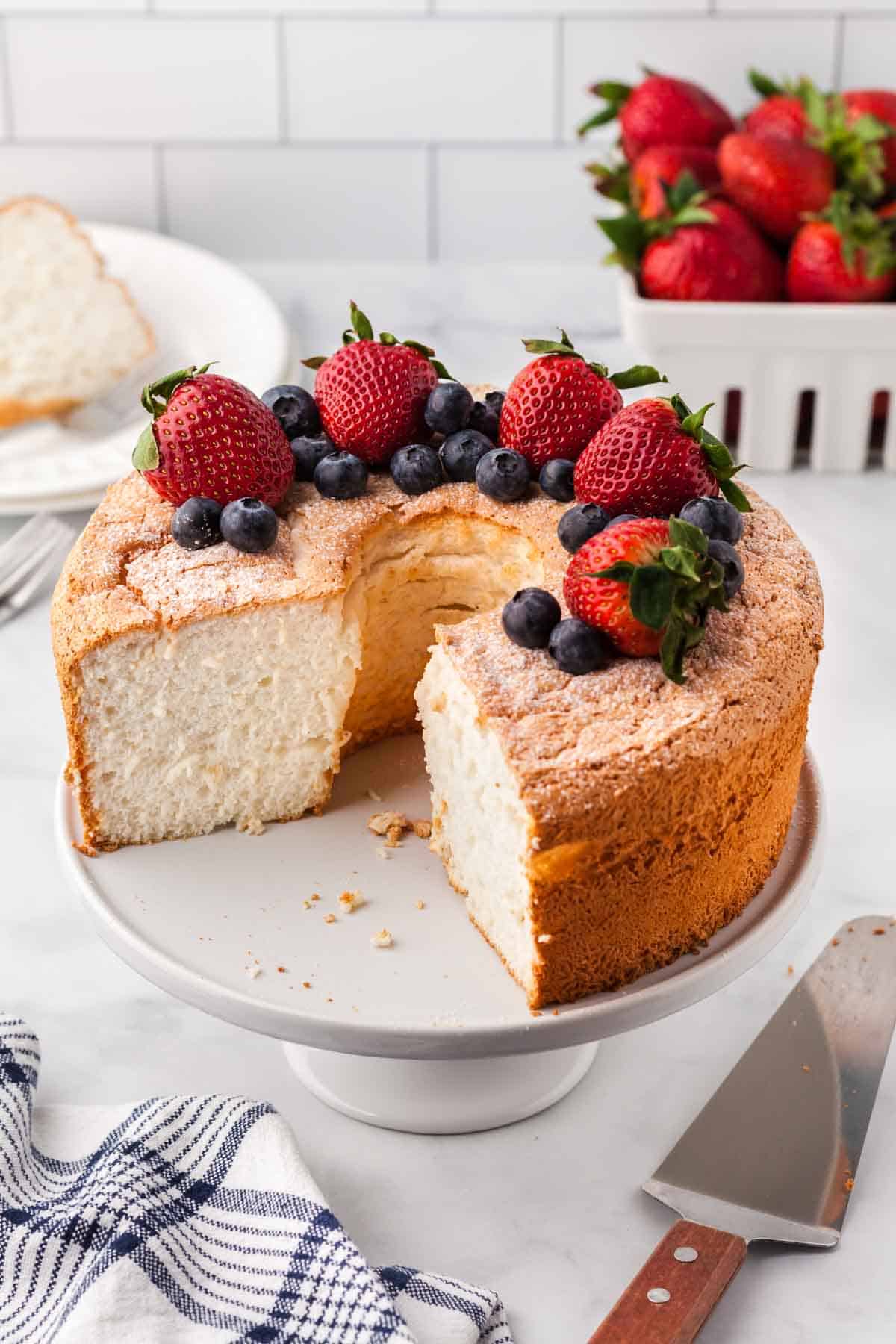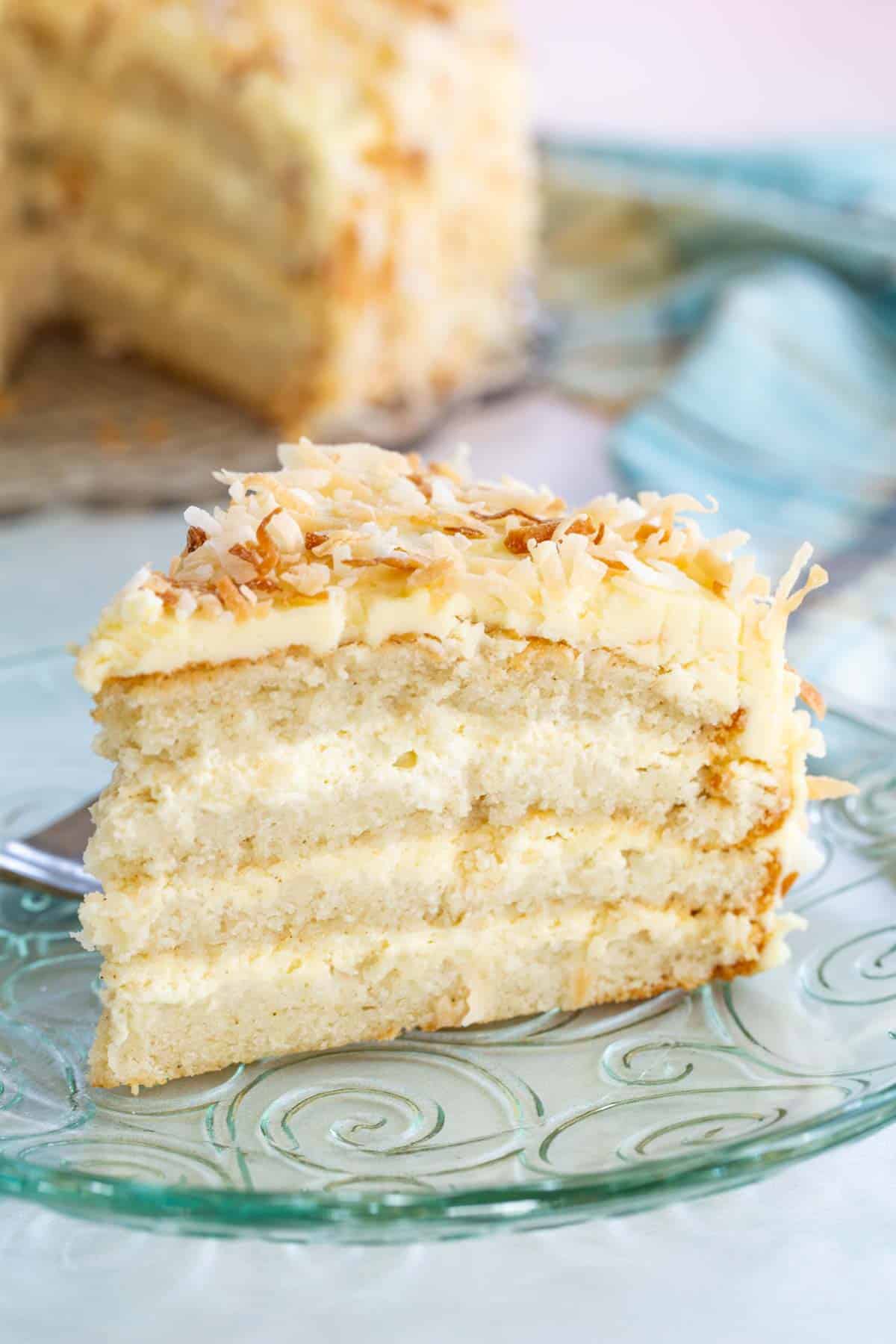This post may contain affiliate links. Read my disclosure policy.
Have your gluten-free cake and eat it, too! I’ve wrangled my favorite Gluten Free Cake Recipes for you to try, plus loads of information I hope you’ll find helpful when baking gluten-free.

Table of Contents
- The Most Mouthwatering Gluten-Free Cakes
- What Is Gluten-Free Cake Made Of?
- Can Celiacs Eat Gluten-Free Cake?
- Do Gluten-Free Cakes Taste Different?
- 20+ Must-Make Gluten Free Cake Recipes
- Tips and Tricks
- What Kind of Gluten-Free Flour is Best?
- Ingredients to Watch Out For
- How to Store Extras
- Does Gluten-Free Cake Freeze Well?
The Most Mouthwatering Gluten-Free Cakes
A hard fact of gluten-free living: most cakes are not gluten-free. It can be one of the most frustrating things. I come across a cake recipe that steals my heart, only to find zero options for making it gluten-free! Since going gluten-free myself, my passion is creating easy and satisfying gluten-free dessert recipes for all to enjoy (even gluten-eaters).
No more dense, crumbly, dry gluten-free cakes! From quick snack cakes to something more fit for a special occasion, I’ve rounded up 15 of my favorite gluten-free cake recipes. You’ll find these below, along with some helpful information and tips for gluten-free baking.
What Is Gluten-Free Cake Made Of?
In the simplest terms, gluten-free cake is a cake made without any gluten. This means the cake and its ingredients are free from wheat, rye, barley, or other products that may contain gluten.
Instead, flours in gluten-free cakes feature a blend of wheat alternatives. Some common ones are almond flour, rice flour, tapioca flour, and potato starch.
Can Celiacs Eat Gluten-Free Cake?
A cake made 100% free from gluten is generally safe for those with celiac disease. It’s important to take extra care to ensure that all the ingredients used, and not only the flour, are actually gluten-free (more on this later). Of course, if you’re unsure or if your intolerance is severe, always consult your doctor or health practitioner for advice.
Do Gluten-Free Cakes Taste Different?
They don’t have to! With the right recipe, ingredients, and measurements, gluten-free cakes can taste almost identical to their gluten-containing counterparts.
I will say that one main difference with gluten-free cake recipes is that there often isn’t much room for improvising. When I post a cake recipe, I’ll include any viable substitutions in the post for this reason. Gluten-free cakes often aren’t very forgiving, which obviously impacts the overall taste and texture of the cake.
All this to say: Following a recipe exactly as directed is the key to gluten-free cake that tastes the same or better than regular cake! Below you’ll find easy gluten-free cake recipes to try, plus some useful tips and info to have in mind while baking.
20+ Must-Make Gluten Free Cake Recipes
Ready to dive into some gluten-free baking? Here are over 15 of my best homemade gluten-free cake recipes to try!
Tips and Tricks
Making gluten-free cakes from scratch doesn’t have to be a hassle. There are tons of resources available as awareness towards gluten intolerance grows. Here are some helpful pointers to guide you when baking gluten-free:
- Be Careful With Substitutions: Gluten-free recipes like the ones above are tested and developed to yield the best results. Check the post and recipe cards for substitutions and alternatives for certain allergies, but don’t stray far from the path. When a cake doesn’t turn out as expected, it’s often a case of a weird measurement or substitution in the mix!
- Measure Ingredients Correctly: The best way to ensure you’re using the right amount of an ingredient is to weigh it. If you don’t have a kitchen scale, however, use the “spoon and level” technique for measuring things like flour. Resist the urge to scoop the flour directly from the bag using the measuring cup. Instead, spoon the flour into the cup and then use the back of a knife to level it off.
- Pay Attention To Details: Did the recipe specify room temperature butter or eggs? Does the flour contain xanthan gum or will I need to add it later? Was it one egg, plus one egg yolk? Details matter! When it comes to making gluten-free cakes, read over the recipe closely before you start. This way, you’ll know what to expect and can prep your ingredients accordingly.
- Get Butter to Room Temperature, Fast: So, the recipe says room temperature. But your butter is fresh from the fridge and time is limited. What’s a baker to do? Try the microwave! Warm the butter in a microwave-safe dish in 20-second intervals at low power. It’s ready when you can make an indent in the butter with your finger.
- And Eggs?: To get your eggs to room temperature in a hurry, place the cold eggs (shells intact) into warm water for about 15 minutes.
- If Your Cake Texture Is Off: Over-measuring flour, under-measuring liquids, or over-baking can lead to a cake that’s dry. Overly moist cakes, on the other hand, often don’t have enough flour or too much liquid. Take care when making those measurements!
- Don’t Over-Mix the Batter: If your cake is denser than expected, or if it’s sunk in the middle after baking, over-mixed batter is likely the culprit. Be sure to follow the recipe, and if it reads “just combined”, be sure to only mix until just combined!
- For Fluffy Cakes: Creaming the butter and sugar well is the key to fluffy gluten-free cake. Beating introduces air, and air means extra lift in the crumb!
Learn more about making other types of baked goods in my Gluten Free Baking 101 article.
What Kind of Gluten-Free Flour is Best?
The good news is: there are loads of gluten-free flours on the market. The bad news is: there are loads of gluten-free flours on the market. This can make choosing the right flour for any given recipe overwhelming, to say the least!
Not all flours are the same, and some gluten-free flours may suit certain recipes more than others. For example, the flour you use in a gluten-free bread recipe might not be the best for baking a cake, and vice versa. Other recipes may call for a blend of different wheat-flour alternatives in order to get the best results.
You’ll find in many of my cake recipes, I’m partial to Bob’s Red Mill 1-to-1 Baking Flour. This flour blend has xanthan gum (a thickening and stabilizing agent) already included. This makes it my first choice to use in baked goods. If you do use flour that’s different from what’s listed in the recipe, choose a blend that contains xanthan gum. Otherwise, you may need to add this separately, as it’s a key binding ingredient in gluten-free baking.
Ingredients to Watch Out For
Apart from the flour, many ingredients you find in cake recipes are, for the most part, naturally gluten free. Pure vanilla extract, for example, is made with distilled alcohol and shouldn’t contain any gluten. Still, there are some ingredients that warrant double-checking:
- Baking Powder: Most baking powders contain cornstarch or potato starch, which makes them gluten free. However, some brands of baking powder use wheat starch, which contains gluten and should therefore be avoided.
- Powdered Sugar: Like baking powder, most powdered sugar (a.k.a. Confectioner’s sugar) is gluten-free. It’s made from pulverized cane sugar with tapioca starch as an additive. If you’re concerned, you can easily make your own gluten-free powdered sugar at home. Simply pulse pure granulated sugar in a food processor!
- Oats, Grains, and Meals: If you’re baking with oats and grains, make sure the products you’re choosing are certified gluten-free (see more about gluten free oats). Ingredients like oats and almond flour or almond meal are in practice free from gluten. However, they can come from facilities where cross-contamination occurs. It’s always a good idea to check labels to be sure.
As an extra precaution when shopping, look for brands with gluten-free indications on the packaging. If you aren’t sure about an ingredient, you can always turn to Google or the company’s website for more information. Many brands and companies also have general information hotlines available, where you can learn about products in more detail.
How to Store Extras
You can store most cakes at room temperature, unless otherwise specified in the recipe. An added perk of xanthan gum in baking is that it helps keep gluten-free cakes fresher, longer! Of course, a cake frosted with icing that contains dairy belongs in the fridge for longer storage.
Be sure to refer to the actual recipes for specific instructions. In the meantime, here’s some general guidance when it comes to cake storage:
- Store cakes airtight, either in a container or wrapped in plastic.
- Most cakes will freeze well, others won’t. But if they can be frozen, this is a great option for long term storing! See the next section for details.
Does Gluten-Free Cake Freeze Well?
It depends on the recipe, of course, but most gluten free cakes tend to freeze well. Here are some tips for freezing cake:
- If you do freeze your cake, it’s best to do so before frosting.
- Freeze cakes whole or in individual slices, wrapped tightly in plastic wrap.
- Adding a layer of aluminum foil can help protect the cake from freezer burn.
- Defrost your cake at room temperature (unless the recipe says otherwise).

























